#tips garden
Explore tagged Tumblr posts
Text
💫witch tips I've gathered for the past 8 years that have worked for me💫
some you may have seen before, some you may have not 💜
☆ . +.。 . 。, ☆ ゚. + ☆ * 。゚. o, 。 . + ゚ ☆
- blow cinnamon into your front door in the beginning of each month to welcome in abundance.
- speaking of abundance, mix basil in your mop water before you clean your floors.
- the upside down broom trick works. if you don't know what i mean, turn your broom upside down (bristle side up) and have it near your door to ward off unwanted guests
- if you can, avoid welcome mats. it's literally inviting unwanted energy into your home. if you already have one, just turn it to face the door. OR draw sigils and intent under the mat to specify which energies or being are welcome and which aren't.
- got those cute polaroids of you and your friends? put up a photo wall if it's to your taste, and pay attention to the ones that keep falling. they either may not be doing well, or they may not be wishing you well.
- for the art witches, especially the ones that sell their art, put that intention into your moon water and use it as paint water.
- another tip for the art witches, use sigils when staining your board
- and another for art witches, treat your brush like your wand
- for the 🍃💨 ouid witches, write intentions or sigils on your wrappers, and even pens!
- you used rice and crystal CHIPS for your money bowl, and now that you're refreshing it, it's kinda tedious to pick out the chips? use a selenite stick to stir the bowl. bam. refreshed and no hassle.
#witch tip#witch tips#witchblr#witchcraft#divination#tarot reading#tarot#tarot cards#witch#eclectic witch#pagan#ouid witch#art witch#green witch#garden witch#kitchen witch#hedge witch#sea witch#lunar witch#spirituality#spiritual#spells#magick#manifesting#manifestations
2K notes
·
View notes
Text

281 notes
·
View notes
Text
Low Energy Spring Witchcraft

Spring is unfolding outside my window, and though I can’t always meet it with the full energy I long for, I still find ways to greet it. Here is how I've been supporting myself lately as a witch who often has little to no energy:
⠀⠀⠀⠀⠀⠀⠀໒꒱. 🌱 ⠈ ⠂ ⠄ ‹𝟹 🌷͙֒ . ₊˚ *ੈ
🪟 If able, I crack the window open and let the breeze in. I take my time to notice the new sensations that come with it. I feel the fresh air against my skin, smell the lingering scent of flowers and soil, hear birds chatter in nearby trees, and try to name their songs. If I am unable to, I still try to look outside my window and watch the clouds drift by. Sometimes I will turn on my little fan for air flow, and light a candle that reminds me of Spring.
🌼 I sit in sunlight when it finds me, letting it warm my face with its strength. I have prisms hanging in my windows that cast rainbows across my room as well.
🌧 If it's raining, I thank it when it falls. I notice the sounds and watch the droplets hit the window. Sometimes I'll open my window just a crack to let in that cleansing energy.
🍵 I steep tea with herbs that remind me of green places, like mint and lemon balm. If I'm unable to do so, I thoughtfully sip my water, reminding myself of the ways I'm connected to this element and its role in nature. Alternatively, I drink pre-made tea that I steeped ahead of time (when I had the spoons to do so) and kept in the fridge. (Tea usually keeps in this way nicely in an airtight container to drink throughout the next few days, in my experience. It will last longer if the tea has a higher level of acidity. Make sure you dispose of it if it gets cloudy or tastes off.)
🪴 I keep crystals and houseplants near my bed and couch, where I often sit. I have a pothos and spiderplant that are both very low maintenance.
🧺 I try to change my clothes and be intentional with my color choices. For example, soft greens and earthy browns as small reminders that I am part of the world turning. If I don't have the energy to change, I try to use the intentions of whatever colors I'm wearing/are around me to motivate me for the day.
📖 In days past, I picked flowers and placed them into vases. On low-energy days, I'll tuck fallen petals into pages of books, preserving little moments of Spring. Keeping around flowers, plants, or even just a jar of soil makes me feel more connected to the earth this season.
🍓 I keep simple, easy snacks nearby if I can't get up. Right now, I have a container of peanuts (grounding, stability, energy, prosperity). If I have the energy to get up, I try to eat at least one thing that is fresh and in season.
🎧 I listen to music that connects me with the energy I want to focus on. I have designated playlists for different seasons, feelings, and intentions. (I may post them on here someday.) ⠀⠀⠀⠀⠀⠀⠀. .⠀ ‧˚⠀⠀ 🫧 🪺⠀ ɞ⠀⠀ ˚‧。⠀⠀ :*・゜ 𓍊𓋼𓍊
Even if your practice looks like rest, like noticing, like being gentle with yourself, you’re aligning with the turning of the earth, and that’s magic enough. Let Spring’s renewal be a reminder of that.

#dividers by @fairytopea#bonnibel babbles#spoonie witch#disabled witch#bedridden witch#low effort witchcraft#low energy witchcraft#witchblr#witchcraft#seasons#spring#spring witch#garden witch#plant witch#eclectic witch#spring magick#spring magic#spring witchcraft#seasonal witchcraft#witchy tips#everyday magic#spring equinox
254 notes
·
View notes
Text
Garden Hacks 🤔
#pay attention#educate yourselves#educate yourself#knowledge is power#reeducate yourself#reeducate yourselves#think about it#think for yourselves#think for yourself#do your homework#do some research#do your own research#ask yourself questions#question everything#garden hacks#gardening#gardening tips
826 notes
·
View notes
Text


I'm making another post about these DIY seed strips because they are genius and I'm so thankful to my neighbor for teaching me about them!
All you need is:
Toilet paper
Flour
Water
Seeds
This is great for seeds I chronically over seeds and will eventually have to thin like carrots, lettuce, radishes, etc.
Get a little bowl and combine 1 Tablespoon flour with 1 Tablespoon water. You want it to be a paste like consistency and not too runny.
Get a length of toilet paper and put small dots of the wheatpaste in the spacing your seeds require a long one side of the toilet paper.
Place a seed or two on that dot all along the length
Fold the toilet paper over and the little seeds are "glued" into the paper in a way that water can dissolve and the seed can grow through.
Hang the lengths of toilet paper somewhere until it dries or it could seep through and stick to whatever is on the other side.
Follow the instructions on the seed packet as to when to plant and plant as normal, just in a strip.
This kind of prep totally helped out my desire to get a jump on gardening when the weather just isn't there for it yet.
273 notes
·
View notes
Text
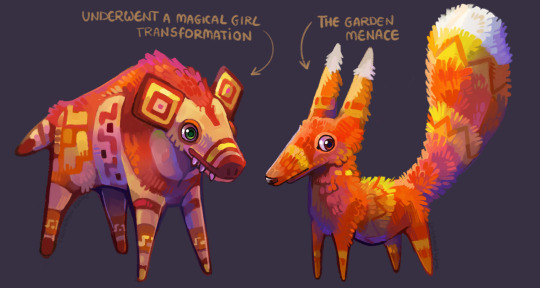
Hello I am back with more Viva Piñata doodles! Turns out if you think enough about fluffy piñatas you can force your way through art block (at least for a while)
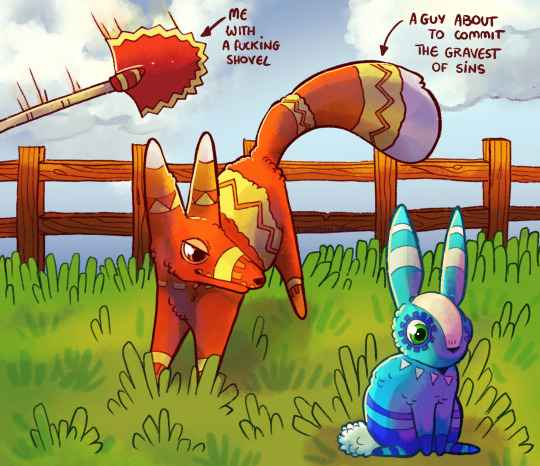
The typical Viva Piñata experience, I love you Pretztail but why are you like this I drew so many Pretztail as a "do over" of my first Viva Piñata drawing from 2018
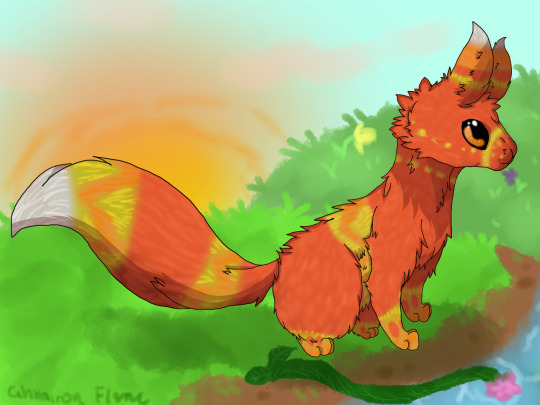
that's when it all started
#For anyone not in the know a Pieena can be made from a Pretztail that has been gifted a bone#after that you can get it at the desert#also additional piñata lore#a Pretztail CAN AND WILL haunt your garden if you have a bunnycomb in it#they won't stop coming#they won't stop attacking them#the only way to end it is getting the master romancer achievement for pretztail and then banning them from appearing#despite this I still love those little dudes#even if they are rascals#me talking about Viva piñata designs : this is the topest tier of creature design#me actually drawing the designs : oh god what does that pattern look like from this side#this is for all the people how still somehow reblog my previous piñata drawings and comment about how they miss the games#I do too#so here I am with doodles#viva piñata#viva pinata#vp#viva pinata tip#pretztail#bunnycomb#pieena#art#cinnamon's doodles
776 notes
·
View notes
Text
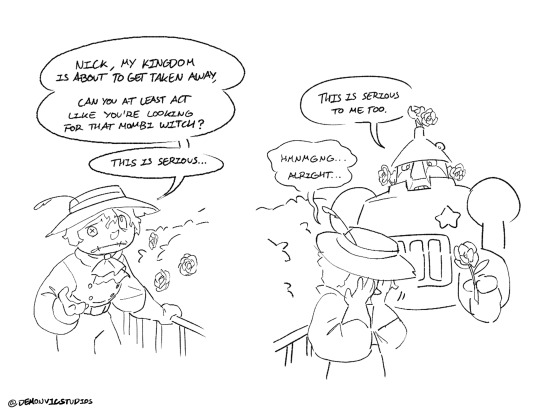

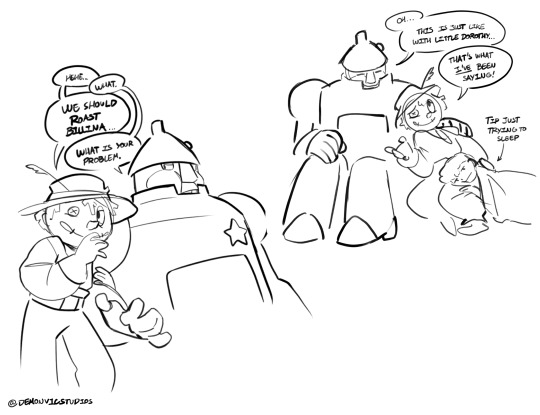
some second and third book doodles hehe Part 1! Part 2!
#my art#the wonderful wizard of oz#the wizard of oz#the tin man picking roses from the royal garden after giving up on finding mombi... hes just like me fr...#i also think its funny that tip uses the scarecrow as a pillow a couple times
188 notes
·
View notes
Text

#photograph#photo#my photos#photooftheday#photoshoot#photographer#picture#photoshop#photography#flowers#nature animals#nature#landscape#mother nature#photography tips#photographers on tumblr#landscape photography#photography art#photography on tumblr#photography blog#flower#floral#flowers aesthetic#flowers in art#flowers of tumblr#garden#spring#plants#wildflowers#rain world
382 notes
·
View notes
Text
CAN THEY COOK?- project: eden's garden cooking headcanons

detailed explanation for each placement, starting from "let them cook" to "do not let them in a kitchen unsupervised." everything's below the cut:
LET THEM COOK
-ingrid and eloise have big families and they have siblings, so it only makes sense they can cook well. desmond's mom and dad run a chain restaurant, so i feel like he'd be a good cook by proxy. -if there are people you trust to take you to a good restaurant, i feel like it'd be wenona, toshiko, and jean. partially vibes based but wenona would know when those ingredients are good and fresh, toshiko would appreciate expensive but also simple and affordable meals and jean has enough experience around his crew to understand how people's palates differ (as well as having tried a variety of dishes) -grace is an athlete. she will have her "cheat days" but other than that she is DEDICATED. veggies and grains before playing and protein after. i feel like she'd hate those weird health shakes though. she makes and breaks the rules as she wishes
-kai is the type of guy who strikes me as someone who is a good cook. there are a few dishes he can make off the top of his head and they're probably all specific internet dishes (i.e. pancakes, breakfast bowl, veggie pasta... myriad of drinks etc.) buttt i think if you asked him to just fry an egg he'd somehow burn it.
-damon's parents probably taught him how to cook as a life skill and also as #bondingtime. he'd probably know how to make some traditional japanese dishes but like i also feel like he gets a bit lazy with cooking sometimes (either because he's too locked in studying or he's just tired). so like, a bowl of cereal or a boiled egg and plain toast and a banana. i like to think kai and co. bring him to restaurants or cook with him so it's easier.
-diana, diana, diana. if you believe that she is italian then i do think she could cook some great italian food. but in all honesty i feel like half of her meals are things you don't have to cook (as in over a stove or in an oven). diana 100% is a baker though. she is the type of person to bring freshly baked brownies for the class. i headcanon she, ingrid, toshiko and eloise help her out.
What the hell, sure.
-i am so hard pressed to believe these guys eat enough veggies.
-all busy + don't feel like cooking + it's faster to take out food. once in a while they will cook but it is rare. their food is edible to them and that's all that matters
-cassidy is a MENACE on the grill though (proof? that one eden's island promotional art). ask her to fucking grill anything and she will DELIVER. same goes with jett but i believe cassidy is the better grill dad here
-this is a joke but why can I see jett, cassidy and mark going to restaurants guy fieri style
DO NOT LET THEM COOK
-i feel like eva is the type of person to be like "i can cook" but she ABSOLUTELY cannot. you'll be in the kitchen with her and she would be too embarrassed to admit she can't despite the fact she is continuously failing. she gets the hang of it after a while -wolfgang doesn't know how to do his own laundry so i assume he can't cook (bc he spent all his time studying as a kid) -if you asked ulysses if he could cook he'd be like "sort of?" he can follow a recipe, but if something goes wrong he panics a bit. i think he forgets to feed himself sometimes -i think tozu would make a mean shepard's pie (pun not intended). i feel like he likes french food. while he jokes about british food he finds it very unexciting and bland. he is genuinely a good cook but would absolutely troll you by putting a "secret ingredient" in his food (i.e. putting pineapple in lasagna) unfortunately, this would be ineffective on someone like kai or eva who like "weirder" food combos
#i feel like people are 50/50 on kai being a horrible cook or a good cook#personally i think he's a good cook#gaming trio diners drive ins and dives AU when LMAO#feel like toshiko wenona and jean have the best manners at restaurants too. if the food is good they tip the waiters well#if they wanted a real social experiment all they had to do was put eva wolfgang and ulysses in the kitchen and see which dish is edible /j#wolfgang would absolutely win#eloise ingrid and desmond are no brainers tbh. if they host a potluck everyone is GOING#project eden's garden#project: eden's garden#p:eg#ingrid grimwall#desmond hall#eloise taulner#wenona p:eg#toshiko kayura#jean delamer#grace madison#kai monteago#damon maitsu#p:eg tozu#p:eg mara#diana venicia#jett dawson#cassidy amber#mark berskii#wolfgang akire#eva tsunaka#ulysses wilhelm#certifiedlesbianvampire’s rambles#headcanon
67 notes
·
View notes
Text

so last saturday i taught my first class 🫣 it was about 3 different ways to start seeds. it was a small class and pretty chilly out, so between nerves and cold i was super blushed in the fave and runny nose. hopefully nobody noticed 🫣 i'm more comfortable with one-on-one, especially when it comes to anything skill-based. like if someone has started seeds before can undsrstand a couple more things than someone who has never even planted anything before let alone start a seed. i asked at the b3eginning of the class and the skill levels for seeds were mixed. just hope i didn't bore anyone or overwhelm others...
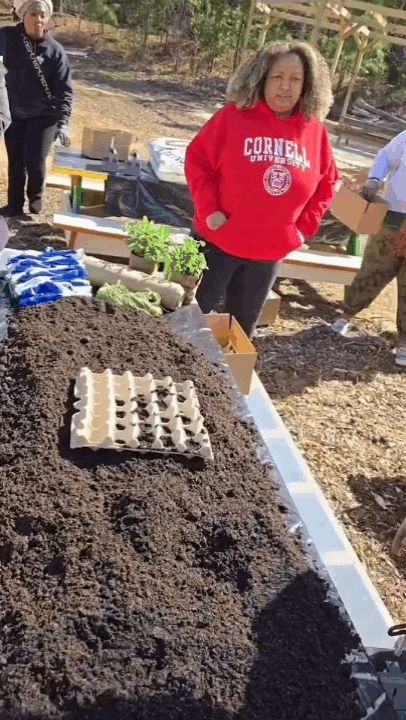

first up was the egg carton method so we could talk about seed depth. i also went off tangent and talked about how all the methods shown today are as plastic free as possible because plastic free is a privilege and as i took an awkward pause asking myself why i went off on that tangent i noticed EVERYONE nodding their heads. for 2 seconds i knew what it felt like to be a preacher and everyone visibly agreeing with you.


anywho. the second method i taught was soil blocking. i personally think it's the best method just not for me since even after like 4 tries my fingers were killing me. not great for arthritic hands on a cold day. also note for future me: while it was nice to note to people that water needs to be added, DON'T LET THEM ADD THE WATER because then everyone adds water and it becomes too wet to make blocks. whoops.



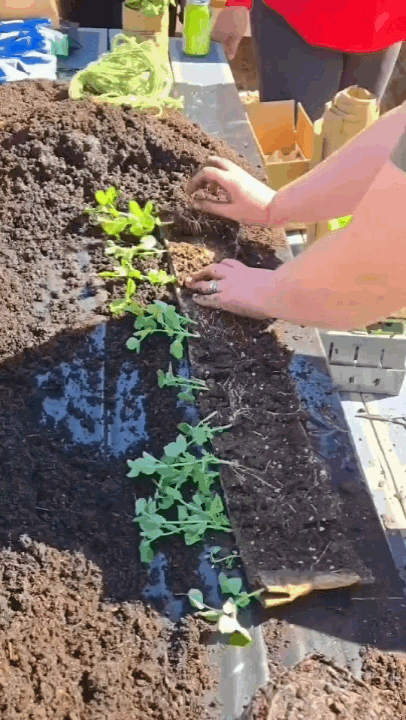
the last method i demo'd was what has been trending on IG, pinterest and probably tiktok idk but everyone online is calling it a soil snail and legit those people haven't tried to say that 5 times fast whilst teaching a class outside in the cold with a runny nose so therefore, collectively, as a class, we decided to rename it the cinnamon roll method. and legit this was the method everyone LOVED doing and was very sad when i ran out of paper. i only precut like 4 extras just in case extra people showed up, but less people showed up so about half the class got to make more than one roll. i had a roll i made 2 weeks prior to test the method out and people were happy to see what theirs would look like in the future. one student had a trader joe's bag in their car so i asked if i could test making one with it, and realized keeping the handles on was cute. another student said it was a very nice purse i had and i said thank you it's my emotional support seedlings and people laughed. i get nervous when people laugh because i never know if they're being nice or if what i said was actually funny.

looking back at this photo i now see why i got a terrible sunburn lol.
so yeh, first of many classes. the community garden who sponsored the class wants me to teach one (almost) every month now after seeing me teach that class. so over the rest of the weekend we brainstormed together on what else i'll teach this year. all for free, too. i love the woman in charge of this garden - we both believe in making anything that's about feeding yourself or others need to be free or as close to free as possible for everyone. it's refreshing and fun to work with someone with similar viewpoints with life.
if you could take a class about seeds or plants, what would you want to learn? still need some ideas for the fall/winter months. april is about companion plants.
#gardening#home garden#gardenblr#homegrown#grow food#food#homestead#garden blog#homesteading#suburbia farming#suburbian agriculture#suburban agriculture#suburban farm#garden#plant tips#plants
92 notes
·
View notes
Text
"gardening is so expensive" "gardening requires so much space" "growing plants takes a lot of effort" me and the four-foot-tall tomato plant I grew in my college dorm room inside an old ice-cream tub, from seeds that I dried from a rotten fruit taken from a guy's garden:
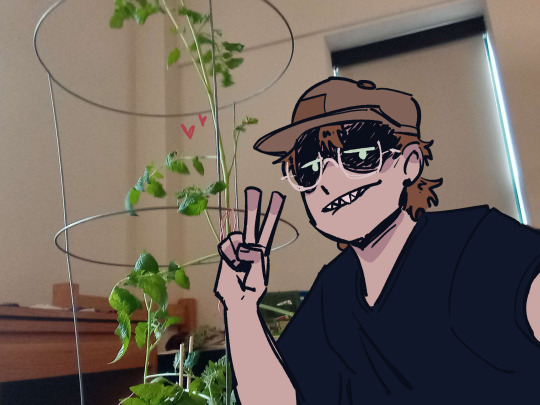
(i hope this thing produces fruit, that'd be so cool. it's flowering but no little tomatoes yet)
#gardening#garden#plants#digital art#tomatoes#gardening tips#as long as you remember to dump some water in there when the leaves get papery you'll be fine#growing plants#tomato
72 notes
·
View notes
Text

And to all of my language learners out there, check out Radio Garden if you haven't yet! It's a direct access to so many different radio frequencies from all around the world! You can listen to music, sports, casual conversations and debates, news, and so much more!
For me most of the time things are almost impossible to understand, but every so often I understand a word, or part of a sentence, and it's such an encouragement!!
93 notes
·
View notes
Text
Herbal Allies: A Beginner's Guide ☪
When we think of herbal magick, it’s easy to picture exotic, hard-to-find ingredients mugwort from a far-off land or frankincense gathered from ancient trees. But the truth is, magick can be found in the plants right outside your door. Today, we’ll talk about how to build a connection with these everyday allies and use them to deepen your practice.
Start by Observing ☼
Magick begins with awareness. Spend time outside or with the plants in your home, whether it’s a sprawling garden, a single potted herb, or wild plants in a nearby park.
Observe their growth patterns, textures, and how they react to light, water, and your touch. Does the plant feel vibrant, slow, or protective? Each plant carries a unique energy signature, and tuning in will help you sense its magickal potential. Keep a journal of your observations note how the plant changes with the seasons, any interactions you have with it, or simply what draws you to it.
The Energy of Everyday Plants ✧₊⁺
You don’t need rare herbs to create powerful magick. Common plants like dandelions, clover, or even rosemary from your kitchen hold immense potential:
Dandelions: Resilience and adaptability, great for spells focusing on strength or new beginnings.
Clover: Traditionally linked with luck and protection.
Rosemary: A kitchen staple for cleansing, memory, and energetic protection.
Take time to explore the plants in your environment. Look up their traditional uses in folklore or magickal practices. You might be surprised by the treasures growing in your own backyard.
Communicating with Plants୨ৎ
Plants are living beings, and connecting with them on a spiritual level can enrich your practice. Here are a few ways to establish a relationship:
⟡Meditate near the plant: Sit quietly and focus on its energy. How does it feel to you calm, vibrant, or grounding?
⟡Touch and listen: Gently hold a leaf or flower and see if you can sense any shifts in your energy.
⟡Speak to the plant: Thank it for its presence and offer it water or compost as a gesture of gratitude.
Ask for guidance or permission: If you’re harvesting a leaf or flower, always ask permission. You may feel a sense of “yes” or “no” in your intuition honor it. The more you engage with a plant, the more its energy will resonate with yours.
Using Herbal Allies in Magick✧˚ · .
Once you’ve built a connection, there are countless ways to work with plants in your magickal practice, I'll leave here some examples:
⟡Herbal Sachets: Combine leaves or flowers in a small pouch for protection, love, or prosperity.
⟡Offerings: Use a sprig of rosemary or a handful of clover as a symbolic offering to your deities or spirits.
⟡Sigil Crafting: Press a flower or leaf and use it to decorate or enhance your sigils.
⟡Teas and Infusions: Brew plants like mint, chamomile, or lavender for relaxation and spiritual focus.
Always harvest respectfully never take more than you need, and leave enough for the plant to thrive.
Building a Relationship Takes Time ๋࣭ ⭑⚝
Working with herbal allies isn’t just a one-time act. It’s a relationship. The more you engage with a plant, the deeper your understanding of its energy will grow.
Take time to learn the folklore or history behind the plants you’re drawn to. Document your experiences in an “herbal grimoire,” where you can record their uses, personal observations, and any spells you’ve created with them.
Herbal allies don’t have to be rare or expensive. The plants around you whether in a garden, a park, or your own kitchen are full of magick, waiting to be discovered. Take time to connect, listen, and learn from them.
Have you worked with local plants in your practice? Share your favorite herbal allies and their stories I’d love to hear them! (:
#witch#witchcore#witchcraft#witches#witchy vibes#green witch#chaos witch#nature#plants#garden#plant witch#nature witch#witchy tips#witch community#witchblr#plantblr
122 notes
·
View notes
Text
Useful Tips / Lifehack 🤔
#pay attention#educate yourselves#educate yourself#reeducate yourselves#knowledge is power#reeducate yourself#think about it#think for yourselves#think for yourself#do your homework#do your research#do some research#do your own research#ask yourself questions#question everything#useful tips#life hacks#garden tips#thinking smart#gardening#grow your own#truth be told#news
126 notes
·
View notes
Text
a working witch’s guide to paganism in the office
i saw a post recently from someone wishing they could incorporate their practice into their workplace without judgement so here are some ways i do it
essential oils are a great way to cleanse your space/bring in specific energies without bringing attention to your beliefs especially as they’re so popular across the board, i keep a spray bottle with a homemade mix of oils on my desk and once a week i walk around my room spraying and setting my intentions
animal imagery/figures in devotion to your gods, most deities have at least one animal associated to them and something cute and small won’t draw any attention, i keep a little crow plush on my desk in devotion to one of my gods and everyone else thinks it’s just a little decoration
plants! as a green witch/herbalist i know not everyone might share this sentiment but i work so closely with nature that having my work space filled with plants helps me still feel very connected and centered without a second thought
spell jars/sachets can be easily tucked away in desk drawers, i keep one filled with herbs for success hidden away in my filing cabinet and take it out to refresh it in times of high stress
#please feel free to add on your own ideas! these are just some I’ve gotten away with in a very conservative field#bunny speaks#green witch#paganism#pagan#nature#herbalism#herbal witch#hellenism#solar witch#slavic paganism#witchcraft#witchcraft tips#garden witch#kitchen witch#spell jars#hellenic polytheism#polytheist#omnitheism
268 notes
·
View notes